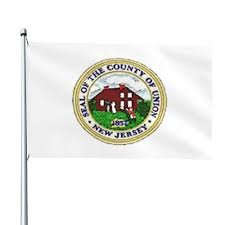Plainfield, NJ: The Queen City’s Crown of Culture, Courage, and Community Power
Known affectionately as “The Queen City,” Plainfield, New Jersey is a place where Black brilliance, Caribbean flavor, and grassroots organizing pulse through the blocks. Tucked in Union County, Plainfield is a city of bold firsts, hard-fought struggles, and deep-rooted families. From its Victorian mansions to its marching bands, from its Black Panther legacy to its Haitian-led youth groups, Plainfield is—and always has been—more than just a suburb. It’s a sanctuary, a stage, and a proving ground.
Origin and History
Plainfield’s name might sound quiet—but its history has never been.
- Lenape Territory: Before European settlement, this land was home to the Lenape people, who used the creeks and meadows for seasonal farming and community life.
- Colonial Beginnings: Settled in the 1680s by English Quakers, Plainfield grew as a trading and farming village before becoming a key regional hub by the 1800s.
- Incorporation & Railroads: Plainfield was officially incorporated in 1869, thriving through the late 19th and early 20th centuries as a railroad suburb and manufacturing town.
- Black Migration & Suburban Leadership: During the Great Migration, Black families moved to Plainfield from the South and NYC, building strong communities and institutions.
- 1967 Rebellion: In response to police violence, systemic racism, and economic neglect, Plainfield experienced a major uprising in July 1967—part of a larger wave of urban unrest nationwide. It marked a turning point in the city’s racial justice journey and political consciousness.
Demographics
Plainfield is proudly and powerfully Black, brown, and global.
- Population: Approx. 55,000 residents (2020 U.S. Census)
- Cultural Composition: ~46% Latinx (mainly Dominican, Puerto Rican, and Salvadoran), ~39% Black/African American (including African American, Haitian, and Jamaican residents), ~10% white, and ~5% multiracial or Asian.
- Languages Spoken: Spanish, Haitian Creole, English, French, and Patois are commonly spoken across homes, churches, and storefronts.
- Immigrant Power: Nearly 40% of residents are foreign-born, making Plainfield one of the most internationally rooted cities in New Jersey.
Geographic Location and Size
Plainfield holds it down in Union County—but with its own vibe entirely.
- Size: 6 square miles
- County: Union County (though it borders Middlesex and Somerset counties)
- Transit Access: Served by NJ Transit’s Raritan Valley Line, plus major bus routes. Though not directly connected to the PATH or Midtown Direct, it remains a key commuter and cultural hub.
Where We Thrive
Plainfield thrives in its churches, salons, school auditoriums, block parties, and policy fights.
- Education: The Plainfield Public Schools district serves over 7,500 students. Despite resource challenges, the community pushes hard for equity, culturally relevant curriculum, and Black and Latinx leadership in schools.
- Faith & Civic Hubs: Plainfield’s churches and mosques are not just spiritual centers—they’re community kitchens, voter registration hubs, and safe havens. Institutions like Shiloh Baptist Church and the Islamic Society of Plainfield are deeply involved in civic life.
- Creative Capital: Known for its musical legacy, including ties to Parliament-Funkadelic and jazz icons, Plainfield continues to cultivate local poets, muralists, DJs, and dancers.
- Political Power: Plainfield has a long history of Black political leadership and is home to activists, educators, and council members who continue to fight for housing, education, and youth services.
Fun Facts and Local Gems
- Plainfield Symphony Orchestra: The oldest community symphony in New Jersey, founded in 1919.
- Parliament-Funkadelic Roots: George Clinton’s legendary funk collective had roots in Plainfield barbershops and studios.
- Crescent Avenue Historic District: A nationally recognized neighborhood with Victorian mansions and civic buildings reflecting Plainfield’s 19th-century affluence.
- Washington Community School & Park: A community gathering spot for youth programs, sports, and rallies.
- Annual Haitian Flag Day & Dominican Independence Celebrations: Major local events that reflect the city’s pride and cross-cultural connections.
Challenges and Change
Plainfield has never stopped fighting for its place, its people, and its future.
- Gentrification Pressures: Rising property values and speculative development threaten longtime residents—especially renters and elders.
- School Resource Disparities: Schools face infrastructure issues, underfunding, and lingering achievement gaps rooted in decades of systemic neglect.
- Policing & Reentry: Community members continue to demand reforms to local law enforcement, reentry services, and juvenile justice approaches.
- Youth Needs: While cultural pride runs deep, Plainfield youth need more access to mental health support, paid internships, and leadership pipelines that reflect their lived experience.
Community Voices
“People talk about us like we’re just history—but Plainfield is still building. Still teaching. Still raising kids who speak three languages, dance salsa and step, and run city hall meetings before they turn 18.”
— Jada R., Haitian American educator and third-generation Plainfielder
Why Plainfield Matters
Plainfield is the kind of city that shapes the world quietly—and sometimes loudly. It’s the sound of a marching band echoing down Park Avenue. It’s the Haitian auntie running a school supply drive from her porch. It’s the youth poet standing on stage telling the truth their ancestors couldn’t. Plainfield matters because it’s proof that cultural power and political progress don’t come from fancy branding. They come from the block.
HFYC uplifts Plainfield because every crown deserves to shine—and “Queen City” earned hers the hard way.
Call to Action
Are you from Plainfield? Know a youth leader, organizer, healer, artist, vendor, coach, or elder helping shape the city’s next story?
Let us help tell their story.
Submit a feature, nominate a changemaker, or reflect on what Plainfield means to you—from the barbershop to the bandstand.
